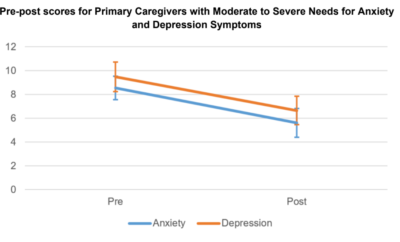
Insights + interviews
4 out of 10 working professionals face significant stress in their lives
Happy Customers and the Collective Change Institute shared the findings of a survey on mental health, with a focus on stress and anxiety experienced by working professionals, as well as the varying levels of support available to them.
The findings – polling over 800 respondents across Asia – reveal that nearly 40 percent of Asian working professionals feel uneasy or worried on a regular basis in their daily work and life.
While 42 percent of Asian working professionals seek support from their family members, only 8 percent are willing to seek help from mental health professionals such as psychiatrists or counsellors.
Other findings include:
- About 4 in ten Asian (40 percent) working professionals experience a significant level of stress in their work and personal lives.
- About 3 out of 10 (35 percent) Asian working professionals find the support they receive from their social circle to be adequate but not very good.
- 80 percent of the surveyed individuals reported engaging in activities such as meditation, yoga, or hiking to maintain a healthy work-life balance, while 20 percent felt exhausted and lacked knowledge on how to care for their mental health.
- Around 65 percent of working professionals in Asia agree that their employers promote health and well-being initiatives for their staff.

We discussed the survey alongside the impact, and ways that employers can help mitigate them with Lin Tan, Director of Collective Change Institute.
the Active Age (AA): What is the impact of low or negative employee well-being for businesses?
Lin Tan (LT): An Employee Wellbeing Research in 2021 reports that 95 percent of respondents see a high-pressure work environment for employees as a key business risk, with 50 percent classifying it as high risk. Conditions such as burnout and poor mental health are now being seen as a risk to overall business performance.
When employees feel physically and mentally unwell, productivity and engagement in work will suffer. As a result, focus, effective decision making and collaboration with colleagues will reduce, which are all crucial factors of high-performing teams.
Absenteeism might increase, as employees are more likely to miss work due to illness and burn out. For the organisation, this could lead to decreased productivity and increased healthcare costs. Employers are at the risk of losing their high-performing employees to burnout if they are not taken care of.
Unfortunately, what might hurt an organisation who doesn’t take care of their employee well-being the most, is the hight turn-over rate and impact of their employer brand. When employees don’t feel supported and valued by their employer, they are unlikely to stay with the company in the long run. The business will be unable to attract and retain top talent.
AA: What are the benefits of investing in employee well-being from a business/organisation’s perspective?
LT: When employees feel physically and mentally well, they are more productive and engaged in their work. They are better able to focus, make effective decisions, and collaborate with colleagues. They build a positive work environment and relationships that in turn engages and inspires others.
When employees are healthy and happy, they are less likely to miss work due to illness, or burnout. Additionally, they are less likely to come to work when they are not feeling well, which can lead to decreased productivity and increased healthcare costs. Employers are at the risk of losing their high-performing employees to burnout if they are not taken care of.
Investing in employee well-being can increase employee loyalty and reduce turnover rates. Employees who feel supported and valued by their employer are more likely to stay with the company long-term, which is a huge competitive advantage.
Companies that prioritise employee well-being are seen as more attractive employers. This can help attract top talent and improve the company’s reputation. Employees become brand ambassadors, and refer candidates to role vacancies. Also, a higher likelihood of boomerang employees.
When employees are healthy, happy, and engaged, they are more likely to provide excellent customer service, another huge competitive advantage.

AA: What does job dissatisfaction look like, from an employer and an employee perspective (pls reference mental health, mental wellness, etc)?
Job dissatisfaction can appear in many forms, which may appear normal on the surface but digging deeper, could be fuelled by job dissatisfaction.
- Feeling of dread, procrastination
Just the mere thought of your work, or going into the office stirs up feelings of dread and resistance. You might find yourself finding excuses to avoid office situations, or the opposite – having to work too hard justifying or hyping yourself up to tackle work-related tasks. Resistance could take place in the form of procrastination of certain types of tasks or conversations. There are many reasons that lead up to this state, like a mismatch of values, or a toxic environment, or loss of meaning in your work, or lack of clarity in your purpose. You are essentially in a place where work to you is a threat, and encountering it creates variations and varying degrees of fear.
- Excessive worry or fear about work-related tasks or situations
A common example is feeling anxious when facing a colleague or boss in a work related scenario, or simply at the mere thought of interacting with this individual. Sometimes, there may not be any specific individual in the picture, but the worry or fear could arise from internal or external expectations of yourself and your performance. This could be derived from a sense of ‘being watched and judged’ on your every decision and action. This fear holds you back from making decisions of your own, and feeling like you need to check whether your actions and decisions are ‘right’ and approved.
- Feeling restless or on edge while at work
Restlessness can be described as the inability to focus on performing a single task confidently. Your mind seems to jump around, or you’re thinking of multiple things as you are attempting a single task. You might be worrying about the future, or thinking about the past, and this is affecting your performance state in the present. In some cases, you might be questioning the meaning of your work, or your role, of your career in general, and the lack of a resounding answer prevents you from ‘putting in your all’ – focus, creativity, resourcefulness and effort.
You could also be experiencing ‘being on the edge’ where small incidences or comments trigger you negatively, resulting in defensive behaviours (our ‘fight’ syndrome), or a ‘flight’ or ‘freeze’ syndrome. Regardless, this behaviour ends up creating a pattern of sabotage, further fuelling a cycle of unproductive thoughts, emotions and actions.
- Difficulty concentrating or completing tasks
Do you find yourself a victim of your never-ending task list? Are you experiencing stress from simply thinking about your email inbox and all the demands waiting to be responded to? Do you feel like you are incapable of fulfilling all the tasks and responsibilities expected of you? Feeling overwhelmed by your responsibilities can create a difficulty to concentrate on your task, usually due to an attempt to multi-task and get as much done as possible. This might cause you to jump around from task to task hoping to ‘clear’ items and free yourself up, while feeling that it is pointless as you’re stuck in this never-ending cycle.
- Physical symptoms such as sweating, rapid heartbeat, or trembling
Our bodies are a sponge, and they take in pressure that we experience from our environment. We may or may not be fully aware of the effect that our environment has on our bodies. Our physical body is connected to our mind, and has its ways of triggering feedback in an attempt to regulate. This shows up in physical symptoms. Sometimes, these symptoms could even act up even outside of us being in a direct experience of the stress.
- Irritability or moodiness
This is a natural state that we slip into when our minds are ‘weighed down’ with problems from work. The feeling of being overwhelmed, or unable to ‘keep up’ or ‘resolve’ challenges can take up a large part of our working capacity. With so much on our minds, it is easy to get irritated and moody.
- Avoidance of social interactions with coworkers or even family
Isolation is a natural reaction when one is experiencing stress and anxiety. There are several reasons for this. Common ones include the feeling that no one understands what you’re going through, so why bother talking about it? Or, the desire to not burden others with your problems. There could also be an unwillingness to look ‘weak’ or ‘incapable’ in front of others. Isolation could act as a way to move away from conversations about the source of your frustrations and stress.
- Trouble sleeping or fatigue
This is a common indicator of workplace anxiety. Constant worry and anxiety rob you of the opportunity to rest, and relax. Your mind is in fight or flight mode as a response to deal with the external threat, and fuels the role of your subconscious to protect you. In survival mode, who can let their guard down and take a break? Being in constant survival mode is draining and results in fatigue, as energy is fed into your defence system and away from healing, replenishing and repairing.
Maybe constantly thinking about your workplace challenge and problems makes you feel like you’re attempting to tackle them to find a solution, and ‘letting go’ or stopping feels unproductive. The thinking becomes a control mechanism that creates a feeling of active solutioning, but is actually depleting energy from true resourcefulness like creativity, intelligence, intuition that aid solutioning outside of the box.
- Holding back from speaking out, stepping up or challenging the norms
Not all symptoms appear as negative, or emotional and physical sensations. They can also come in the form of blocks, where you experience a barrier in speaking out or stepping up in your role. This likely comes from a fear of consequence if you did. It might be driven by a past trauma, or from having seen a negative incident of someone else doing so. Either way, there is a perception that speaking out or stepping up is unsafe, and that your reputation, identity and values will be threatened if you do. Stress and anxiety build up when you are in this position over a prolonged period of time, and the external environment seems to be increasingly threatening, or overpowering, or misaligned to your internal values.
AA: If employees are unhappy, why would they remain in their role?
LT: Employees are unwilling to speak up, step up or challenge norms due to fear of consequence, and this might create a negative impression of them and set them back in growth and promotion opportunities. It seems safer and easier to suppress unhappiness, particularly if their situation involves a colleague or stakeholder.
Some employees may not recognise the severity of their symptoms and believe that they should be able to handle their anxiety on their own, or that it will ‘go away with time’ or ‘when this situation blows over’.
Additionally, to an extent, today’s work culture reveres hustling and sacrifice, almost like a ‘badge’ that one wears to gain respect and reputation. This is the first barrier that prevents employees from seeking help; do they even believe this could be abnormal? For those who are aware of their dissatisfaction, the next challenge is knowing where or who to go to for help. In some cases, pride gets in the way of engaging help. Financial considerations might hinder others. Many feels asking for help is unproductive and choose to press on to “get through it”.
Lastly, employees may feel powerless against the system they are in, and that raising it or seeking help will unlikely change anything.

AA: If employees are unhappy, why are they not seeking professional help?
There are several reasons why employees may be unhappy and yet, not seek professional help. Here are some of the common ones:
- Stigma: There is often a stigma attached to mental health issues, and employees may fear being judged or labelled as weak or incompetent if they seek help.
- Lack of awareness: Some employees may not be aware of the resources available to them, such as employee assistance programs or mental health benefits offered by their employer. On a more serious note, some individuals may not be sufficiently aware of their states, thinking that it will pass, or that it is normal, or in some cases, they might actually have an unhealthy relationship with states of stress and anxiety by associating it with a positive meaning.
- Time constraints: Many employees feel that they do not have the time to seek help for their mental health issues, especially if they are already feeling overwhelmed by their workload. Their main concern is to deal with their work challenges. Putting themselves first seems counter-intuitive.
- Financial concerns: Some employees may be worried about the cost of seeking professional help, especially if their employer does not offer mental health benefits. This is all the more pronounced if their work stress is caused by financial concerns.

AA: What are 3 things employers or employees can do, to support/help with mental wellbeing or positive mental health in the workplace?
Some organisations taking a multi-prong approach to building a system and a culture that supports mental well-being of their employees. These include a mix of:
- Training people managers in the basic understanding of mental health issues, like how to spot for signs/red flag in their team mates, and what to say/not say, do/not do.
- Creating a psychological safe space/environment for employees to share with their managers and/or peers about the challenges and stress that they are facing, by setting up ‘communities of practices’ or engaging external facilitators or coaches to run workshops.
- Shifting to an explicit focus on people by getting leaders trained in coaching skills role models behaviours that show employees that they are valued and respected as holistic individuals.
- Actively creating awareness about mental health at work through lunch talks, and offer employee assistance program where they can reach out to professional counsellor/coaches 24/7 for free)
- Offering sabbatical leave where employees can take time off from work to re-balance themselves. Others mandate a hybrid work-from-home arrangement that allows employees the autonomy to manage their work-life balance.
Photo by Ante Hamersmit, by l ch and by Tim Gouw on Unsplash








